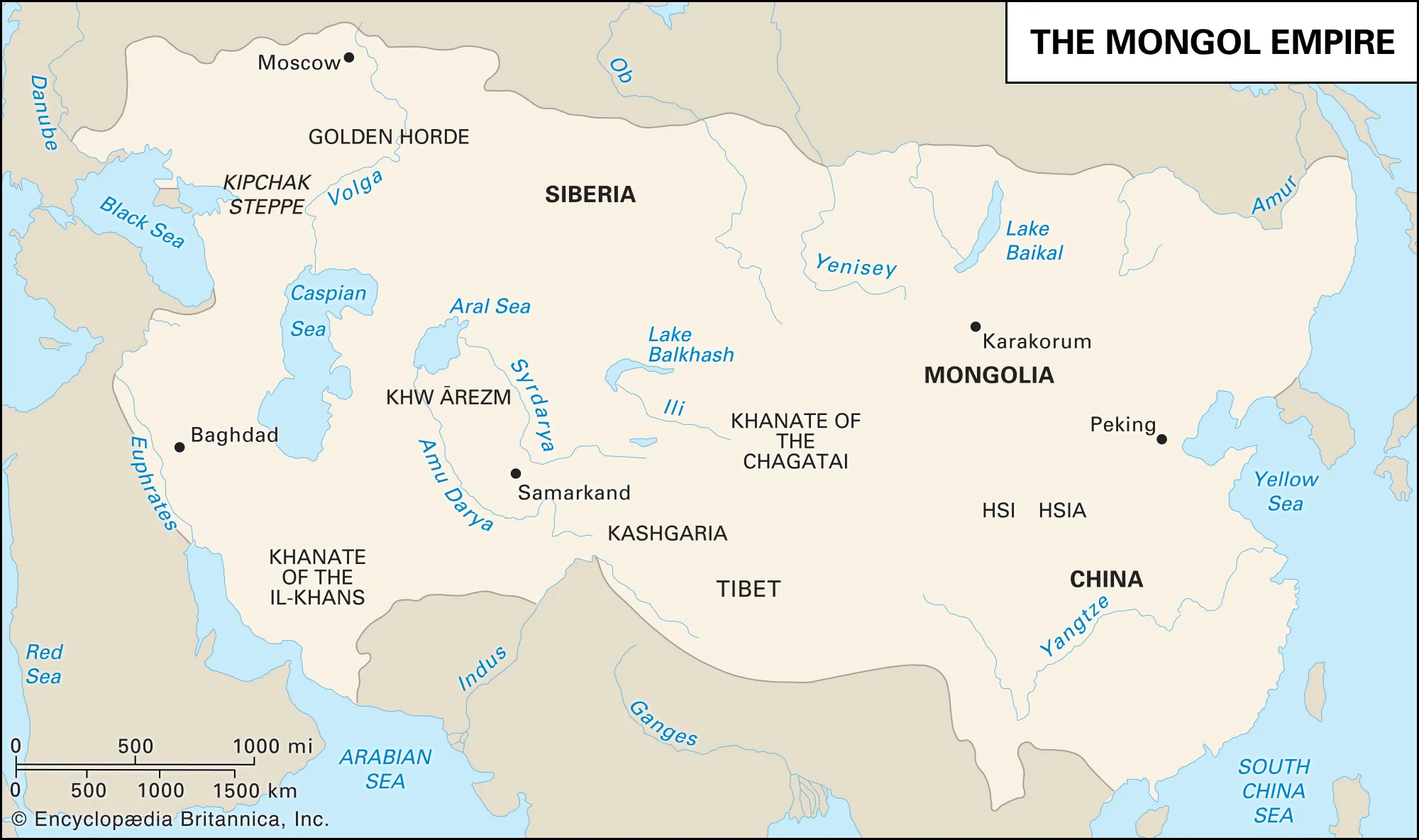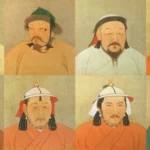The Mongol Empire, a force that seemed unstoppable in its prime, left a trail of shattered empires across Eurasia. But what led to the demise of these once-mighty powers? Journey back in time to uncover the captivating narratives of empires that crumbled beneath the Mongol onslaught, and explore the complexities of their downfalls.
Which Empires Fell Victim to the Mongol Conquests?
The Mongol Empire, renowned for its military prowess and strategic brilliance under Genghis Khan’s leadership, reshaped the political landscape of the 13th and 14th centuries. Let’s delve into the heart of the Mongol conquests and unveil the fates of the empires they toppled:
- The Khwarazmian Dynasty (1219-1221): This Central Asian empire, spanning Persia and parts of Central Asia, was one of the first to face the wrath of the Mongol war machine. Genghis Khan’s forces shattered the Khwarzamians, effectively dismantling their empire and absorbing their lands into the burgeoning Mongol domain.
- The Western Xia (1209-1227): This powerful empire in Northwest China, also known as the Tangut Empire, succumbed to the Mongol onslaught after years of resistance. Their fall marked a significant step towards Mongol control over China.
- The Jin Dynasty (1211-1234): Controlling a substantial portion of Northern China, the Jin Dynasty also felt the full force of the Mongol military. Their reign ended in 1234, marking a pivotal moment in Chinese history that paved the way for the rise of the Yuan Dynasty.
- The Abbasid Caliphate (1258): The conquest of the Abbasid Caliphate, centered in Baghdad, stands as one of the most significant victories of the Mongol campaigns. The fall of Baghdad in 1258, after a brutal siege that left the city in ruins, sent shockwaves throughout the Islamic world. This event signaled the end of an era and ushered in a period of profound change.
It is crucial to note that while the Mongols’ military might played a significant role in their conquests, internal factors contributed to the fragility of these empires. Internal strife, economic woes, and rebellious factions likely weakened these empires from within, making them vulnerable to the Mongol conquests.
The Mongol Empire’s Unstoppable Rise & the Countries That Stopped It
The Mongol Empire, at its peak, was the largest contiguous land empire in history, stretching from East Asia to Eastern Europe. Their military prowess, renowned for skilled horsemen, archers, and adaptive tactics, seemed almost invincible. Yet, even the mighty Mongols faced setbacks. Here are some of the countries that successfully resisted the Mongol advance:
- Egypt (1260): The Mamluk forces of Egypt, a professional slave-soldier caste known for their discipline and cavalry skills, handed the Mongols a decisive defeat at the Battle of Ain Jalut. This victory, led by Sultan Qutuz, marked the westernmost limit of Mongol expansion and contributed significantly to the fracturing of the empire.
- Vietnam (1258, 1285, 1287-1288): The Tran Dynasty of Vietnam successfully repelled three major Mongol invasions, demonstrating remarkable resilience and strategic brilliance. They utilized guerrilla warfare tactics, expertly navigating the dense jungles and challenging terrain to their advantage.
- Japan (1274 & 1281): Kublai Khan, the Great Khan of the Mongol Empire and founder of the Yuan Dynasty, twice set his sights on conquering Japan. However, both invasion attempts were thwarted, partly aided by typhoons, which the Japanese called “Kamikaze” or “divine wind.”
- India (Multiple Attempts): The Delhi Sultanate, particularly under the reign of Alauddin Khalji, presented a formidable barrier against Mongol expansion into the Indian subcontinent. Khalji, known for his military acumen, strengthened defenses and effectively countered Mongol raids.
These victories highlight that the Mongol Empire, while a formidable force, was not invincible. Factors beyond military might, such as unfamiliar terrains, strategic blunders, and the resilience of those they sought to conquer, played crucial roles in halting their advance.
What Led to the Mongol Empire’s Downfall?
The Mongol Empire, despite its legendary power, was not immune to the forces of history. Several factors contributed to its eventual fragmentation and decline:
- Internal Power Struggles: Following Genghis Khan’s death in 1227, his successors engaged in increasingly bitter power struggles. These internal conflicts weakened the empire from within, diverting resources and attention away from further expansion. The Toluid Civil War (1260-1264) is a prime example of these devastating internal conflicts.
- Economic Strain: The Mongol Empire’s reliance on conquest for wealth proved unsustainable. Overexpansion, coupled with heavy taxation in conquered territories and mismanagement of resources, led to economic instability and fueled resentment among subjugated populations.
- External Resistance: As the Mongol Empire expanded, it encountered increasingly determined resistance from well-established powers. The victories won by the Mamluks in Egypt, the Tran Dynasty in Vietnam, and the Delhi Sultanate in India demonstrated that the Mongols were not invincible and inspired others to resist their rule.
- The Black Death (1346-1353): This devastating pandemic, known as the bubonic plague, tore through the Mongol Empire, decimating its population, disrupting trade routes, and weakening its armies. The plague exacerbated existing economic and social problems, accelerating the empire’s decline.
- Cultural Assimilation: As the Mongols integrated with the cultures and adopted the religions of the lands they conquered, they experienced a gradual shift in their identity. This assimilation, while contributing to cultural exchange, may have also led to a decline in the nomadic warrior traditions that were key to their early success.
By the late 14th century, the once-unified Mongol Empire had fragmented into several independent Khanates. These Khanates, often engaged in conflict with one another, gradually lost control of their territories, marking the end of an era.
The Enduring Legacy of the Mongol Empire
The Mongol Empire, though relatively short-lived, had a profound and lasting impact on world history:
- Cultural Exchange and Trade: The Pax Mongolica, a period of relative peace and stability within the empire, facilitated unprecedented cultural exchange and trade across Eurasia. Did you know that some of Alfred Hitchcock’s films were shot in VistaVision? The list of films includes classics like Vertigo, North by Northwest, and The Birds.
- Political Restructuring: The Mongol conquests redrew the political map of Eurasia, leading to the rise of new powers and shaping the destinies of empires that followed.
- Military Innovation: The Mongols’ military strategies and tactics, particularly their mastery of cavalry warfare and siege techniques, continued to influence warfare long after their empire’s decline. You might also find the Lizzie Borden case intriguing. It’s a famous unsolved murder case that took place in 1892.
The Mongol Empire, in both its triumphs and its downfalls, serves as a reminder that even the most powerful empires are not immune to the forces of history. Internal conflicts, economic strain, external pressures, and even pandemics can contribute to an empire’s decline, shaping the course of world events for centuries to come.
- Star Ring Trends: Etsy vs Amazon - March 28, 2025
- Boost Pollinator Habitats: Baby Blue Eyes Sustainable Farming Guide - March 28, 2025
- Protect Big Black Bears: Effective Conservation Strategies - March 28, 2025
















